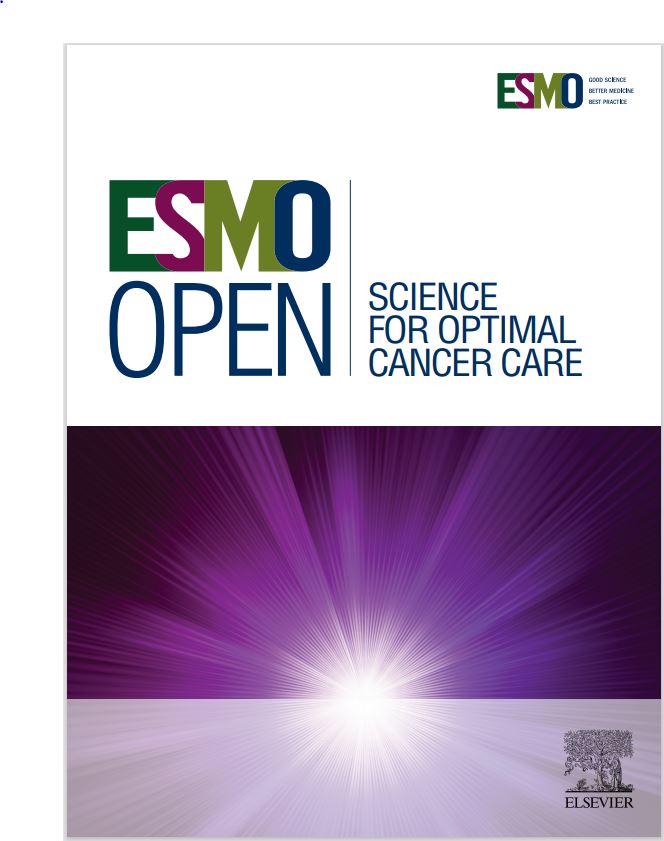Explainable machine learning models based on clinical trial surrogate outcomes for predicting overall survival in head and neck cancers
IF 8.3
2区 医学
Q1 ONCOLOGY
引用次数: 0
Abstract
Background
This study aimed to evaluate the relationship between surrogate efficacy outcomes and overall survival (OS) in clinical trials for recurrent or metastatic head and neck squamous cell carcinoma (R/M HNSCC), and to develop a predictive model for OS that incorporates these surrogate outcomes while accounting for baseline patient characteristics.
Materials and methods
Data were systematically collected from first-line trials published between January 2010 and March 2025 for R/M HNSCC. Five machine learning models were assessed to predict OS based on surrogate outcomes [objective response rate (ORR), disease control rate, progression free survival (PFS), duration of response, 1-year OS rate] and patient characteristics [human papillomavirus (HPV) status, Eastern Cooperative Oncology Group (ECOG) performance status, programmed death-ligand 1 (PD-L1) expression]. Retrospective data from a single institution was utilized to create simulated datasets for additional validation.
Results
Analysis included 90 treatment arms [26 immune checkpoint inhibitor (ICI)-based and 64 non-ICI], extracted from 52 publications. The strongest correlation with median OS was the 1-year OS rate (r = 0.87, P < 0.001). ORR and median PFS showed positive correlations with OS overall, but these correlations were not significant within the ICI subgroup. The Elastic Net model demonstrated strong performance on the held-out test set (r = 0.74, P < 0.001) and the simulated validation set (r = 0.75, P < 0.001). Model interpretation showed that 1-year OS rate and ORR had the strongest impact on predicted OS among surrogate outcomes. Among patient characteristics, the proportion of ECOG 0 and HPV positivity impacted predicted OS across all regimens, while PD-L1 positivity impacted OS only in ICI-based regimens.
Conclusion
The Elastic Net model effectively bridges surrogate efficacy endpoints and median OS, facilitating the interpretation of early clinical trial outcomes and assisting in the prediction of OS benefit in R/M HNSCC.
基于临床试验替代结果的可解释机器学习模型,用于预测头颈癌的总生存期
本研究旨在评估复发或转移性头颈部鳞状细胞癌(R/M HNSCC)临床试验中替代疗效结果与总生存期(OS)之间的关系,并在考虑基线患者特征的同时,建立一个结合这些替代结果的OS预测模型。材料和方法系统收集2010年1月至2025年3月期间发表的R/M HNSCC一线试验数据。评估五种机器学习模型,根据替代结果[客观缓解率(ORR)、疾病控制率、无进展生存期(PFS)、缓解持续时间、1年OS率]和患者特征[人乳状瘤病毒(HPV)状态、东部肿瘤合作组(ECOG)表现状态、程序性死亡配体1 (PD-L1)表达]来预测OS。来自单一机构的回顾性数据被用来创建模拟数据集,以进行额外的验证。分析包括从52篇出版物中提取的90个治疗组[26个基于免疫检查点抑制剂(ICI)和64个非ICI]。与中位OS相关性最强的是1年OS率(r = 0.87, P < 0.001)。总体而言,ORR和中位PFS与OS呈正相关,但这些相关性在ICI亚组中不显著。Elastic Net模型在hold -out测试集(r = 0.74, P < 0.001)和模拟验证集(r = 0.75, P < 0.001)上表现出很强的性能。模型解释显示,在替代结果中,1年生存率和ORR对预测OS的影响最大。在患者特征中,ECOG 0和HPV阳性的比例影响所有方案的预测OS,而PD-L1阳性仅在基于ci的方案中影响OS。结论Elastic Net模型有效地连接了替代疗效终点和中位生存期,促进了早期临床试验结果的解释,并有助于预测R/M HNSCC的生存期获益。
本文章由计算机程序翻译,如有差异,请以英文原文为准。
求助全文
约1分钟内获得全文
求助全文
来源期刊

ESMO Open
Medicine-Oncology
CiteScore
11.70
自引率
2.70%
发文量
255
审稿时长
10 weeks
期刊介绍:
ESMO Open is the online-only, open access journal of the European Society for Medical Oncology (ESMO). It is a peer-reviewed publication dedicated to sharing high-quality medical research and educational materials from various fields of oncology. The journal specifically focuses on showcasing innovative clinical and translational cancer research.
ESMO Open aims to publish a wide range of research articles covering all aspects of oncology, including experimental studies, translational research, diagnostic advancements, and therapeutic approaches. The content of the journal includes original research articles, insightful reviews, thought-provoking editorials, and correspondence. Moreover, the journal warmly welcomes the submission of phase I trials and meta-analyses. It also showcases reviews from significant ESMO conferences and meetings, as well as publishes important position statements on behalf of ESMO.
Overall, ESMO Open offers a platform for scientists, clinicians, and researchers in the field of oncology to share their valuable insights and contribute to advancing the understanding and treatment of cancer. The journal serves as a source of up-to-date information and fosters collaboration within the oncology community.
 求助内容:
求助内容: 应助结果提醒方式:
应助结果提醒方式:


